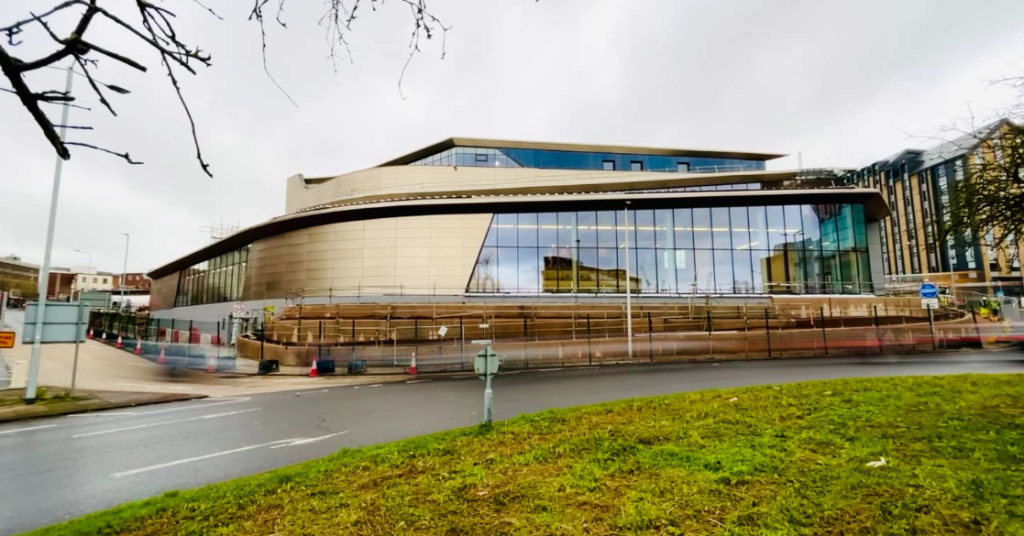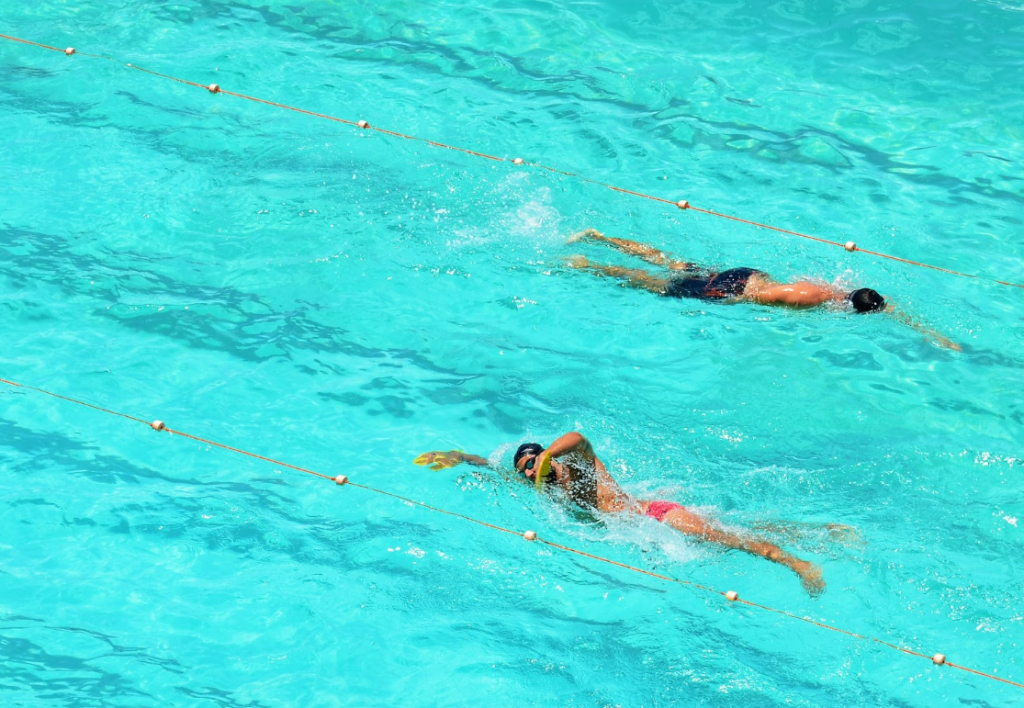The time for burying our heads in the sand and hoping for the storm to pass has come and gone. The swimming industry is creaking alarmingly, and no amount of screaming for more government money will address the core problems.
High energy costs and low swimming numbers make for painful reading for those in the industry. For many operators around the country, the numbers simply don’t stack up, and hundreds, if not thousands, of leisure centres and swimming pools around Britain, face closure over the next decade without a radical approach to halt the slide.
Energy Intensive
The climate is in crisis, and with so much focus on sustainability and lowering our energy needs, it’s perhaps not the best time to be in such an energy-intensive industry. Some swimming pools now use as much as 65% of their revenue to cover energy costs, such as heating, ventilation, and pumps, but that’s just the start.
Chlorine production is among the biggest electricity consumers in the chemical manufacturing industry; while there are countless additional costs to the planet we barely think about, that all add up to make the swimming industry’s carbon footprint a true goliath.
In some parts of the country, leisure centres contribute as much as 40% of a council’s Scope 1 and 2 building emissions. As it stands, the swimming industry is completely unsustainable in the long-run.
The Energy Crisis
While saving the planet should be front and centre in most of our minds, it is often been pushed down the line. The UK government has set an ambitious target of achieving carbon net zero by 2050, but with that aim a distant 27 years away, it can be all too easy for significant change to be pushed aside to address more pressing concerns right in front of us.
However, the recent energy crisis means that now, more than ever, we’re talking seriously about consumption and what might be done.
The energy crisis was caused by a combination of a rapid rebound from the COVID-19 pandemic that outstripped supply, the war in Ukraine, a huge OPEC reduction in oil extraction, and environmental issues. This shockwave, coming so soon after the UK’s lockdowns, which saw the leisure industry lose around £90 million a week, has left the sector battered and bruised.
While there are signs that the worst has passed, it’s unlikely that we’re getting back to the uber-low energy price of the 1990s and early 2000s anytime soon – if ever.
Ageing Relics
Many of the UK’s leisure centres were built between the 1960s and 1980s, when funding for public services was booming, but sustainability and green engineering had barely appeared on the horizon.
These grizzled buildings have served us well, but in terms of increasing sustainability that could help save the swimming industry, they’re hopelessly outdated. While it’s certainly possible to begin adapting these buildings to lower carbon emissions and water usage, we can’t escape the fact that most of these buildings have an expected lifespan of between 25 and 40 years and provide are far from environmentally sustainable setting.
Of course, the swimming industry is one of many sectors facing this problem. Many hospitals date back to when the NHS was introduced in 1948, and the current estimate for repairs and maintenance needed in hospitals or healthcare facilities, in England only, is £10.2 billion.
Re-imagining Swimming Pools

Considering many swimming pools and leisure centres are desperately trying to keep their heads above water, it might sound fanciful to start talking about new state-of-the-art, sustainable swimming facilities. We need to be realistic. If there isn’t money available to keep swimming pools open right now, there almost certainly aren’t funds around to start building new ones.
However, this is a point that we need to start discussing now, even if it might take us ten, twenty, or even thirty years to achieve. To align with government plans for a net zero society and insulate the industry against economic downturn, swimming pools need to be far more sustainable than they are now.
In Exeter, the Pyramids Leisure Centre opened in 1941 at a cost of $56,000 and faithfully served the community for 80 years, but its time has come and gone. In its place has appeared a facility that could act as a blueprint for similar ventures across the UK.
The city’s new Leisure Centre, St Sidwell’s Point, came with a hefty £44 million price tag, but with predicted operating savings of £200k per year, along with additional investment payback in less than ten years, it is a model that could help to revitalise the swimming industry.
St Sidwell’s Point is the first leisure facility in the UK to adhere to Passivhaus standards, an energy efficiency standard and certification scheme for buildings that focus on passive design features to lower energy needs. The centre’s planning used holistic ‘dynamic thermal modelling’ to include features such as super insulation, reduced cold bridging, triple glazing, and orientating the swimming pools to face south to gain maximum solar heating. In total, it is expected to save up to 70% on annual energy costs and use 50% less water – equating to dramatic savings in the long run.
Other Tools in the Fight
While we would all like a glittering, brand-new leisure facility, practicalities make it a distant dream for many. In the long term, many older swimming pools and leisure centres will need to be replaced, but we can start taking certain steps much sooner.
In Oxford, the local council has used £10.9 million set aside by the Government’s Government’s Public Sector Decarbonisation Scheme to decarbonise the heating of three leisure centres – Ferry, Barton and Leys – and an outdoor pool – Hinksey. This has included the installation of air source and water source heat pumps, battery storage capabilities to maximise the use of off-peak electricity, and local solar farm investment. This is expected to deliver a 56% reduction in CO2 emissions and reduce operation costs by around £200,000 per year.
Exmouth Leisure Centre is saving thousands of pounds by heating its swimming pool mainly from heat generated by a washing-machine-sized data centre on-site. The initiative – supplied to the local council free of charge by Data Green – is expected to grow quickly, with another seven swimming pools nationwide already signed up.
Chlorine has always traditionally been a high cost to the swimming industry, but a major shortage in 2022 led some to begin looking into alternative options to this costly and sometimes erratic import. Danish Clean Water is currently leading the way in creating chlorine from salt – an effective way to control waterborne bacteria without using toxic chemicals.

Into the Future
Unfortunately, there is no magic wand to suddenly transform the swimming industry into the sustainable and ethical industry we’d all like to see. This is a long-term project that will take years and require input from both the government and the industry itself – along with the general public whom we ultimately serve.
As with other industries that face enormous challenges that come with becoming net zero by 2050, right now, there needs to be more of a coherent strategy for how to do it. While everybody involved with the swimming industry undoubtedly shares the same drive and vision to keep swimming pools open and accessible for their communities, high energy needs in a high-cost world where swimming numbers aren’t what they once were, places swimming pools and leisure centres between a rock and a hard place.
With just 27 years to go, it’s a problem we can no longer choose to ignore.

 LOG IN
LOG IN
 CONTACT US
CONTACT US








